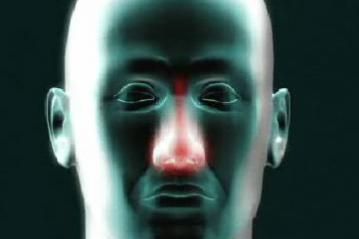Like other food allergies, an allergy to shellfish is the result of your immune system's misidentification of certain proteins found in shellfish. When you eat shellfish that you're allergic to, your body thinks that certain proteins are harmful, even though they're not. Then your body releases antibodies to get rid of those proteins. The antibodies then release other chemicals that result in the allergic symptoms you may be familiar with. Histamine is the chemical that causes many of those symptoms, including rashes, hives and those that can be confused with a cold.
People with shellfish allergies commonly suffer allergic symptoms, including hives, itching, eczema, wheezing, congestion, difficulty breathing, nausea, diarrhea, vomiting and dizziness. Although chapped lips don't seem to be a commonly recognized symptom of shellfish allergies, swollen lips, face, tongue and throat are often associated with shellfish allergies, as is a tingling sensation in the mouth. A rare but serious reaction called anaphylaxis is also associated with shellfish allergies.
Advertisement
Most shellfish allergies only show up in older children and adults. They can be caused by foods that you previously had no problem eating. Shellfish can be divided into several categories, and each type of shellfish has different proteins. So some people with shellfish allergies are only sensitive to specific types of shellfish, meaning they can eat the other types. Meanwhile, other people have to avoid all types of shellfish. Doctors have a few ways of narrowing down what type of shellfish you're allergic to. One way is to eliminate foods from your diet and then reintroduce them to see if any cause you to react. They can also perform a skin test to see which of the common shellfish proteins you respond to. Blood tests are available, as well.
Advertisement


